|
|
|
| At what age did you see yourself making films?
I always wanted to make films. I wrote short stories for my own amusement as far back as I can remember, and my brother, Dennis, and I drew our own comic books, with our own super-heroes. Granted, they looked suspiciously like our favorite Marvel and DC super-heroes, but we were still very proud of them. Walking home from grade school, I would see an alley and think, “That would be a cool location for a movie.” When I was in sixth grade, Bell & Howell came out with a Super-8 camera that could be plugged into a cassette tape recorder; the camera would send a sync pulse to the recorder every time you turned the camera on and off. Then you could plug the recorder into the projector, and the cassette would play sync sound with the projected image. The down side was that everything had to be shot in sequence, you had to get each shot in the first take, and you couldn’t do any editing afterwards, other than to splice the different fifty-foot, thr ee-minute rolls of film together. I begged my parents to get me the camera, projector, and recorder for Christmas, and although they were pretty expensive, my parents agreed. If they hadn’t, I’d probably be a used car salesman now. My first production was a twenty-minute gangster/detective film with all of my sixth-grade classmates playing adult roles. It was pretty awful, but I was hooked on filmmaking from then on. Did you see yourself making horror films? No. The twenty-something Super-8’s I made throughout high school were usually action movies, where I and my classmates would jump off of roofs and out of moving cars and stage elaborate shootouts and fights. We were all training in the martial arts at the time, so we loved performing extensive hand-to-hand fight sequences. One of my friends had a mom who was a cop, and she would lend us all of her guns with blanks, and we figured out a way to make our own blood squibs using red food coloring, baggies, and fire crackers. We’d also shoot car chases by going downtown early on a Sunday morning, when there was little to no traffic, and just speeding around like maniacs. Looking back now, I’m surprised none of us got killed or arrested. How did you get into the film business?
What was your first horror film? I’d written a full-length script in my Screenwriting Class entitled OUIJA, which was not only the first feature screenplay I’d ever written, but my first horror screenplay as well. One of my classmates, Roland Carroll, who’d read it, knew a commodities broker named Walter Josten, who was looking to break into the film business. Roland showed my screenplay to Walter, and he loved it. He started raising money for it right away. I was still in film school during all of this. I was four units away from my Masters Degree, when Walter called to say he’d raised all the money, so I left school to go make OUIJA, which was later re-titled, WITCHBOARD, my first professional feature. I’m still four units short. What was it like doing that film? It was a dream come true. Everything I’d worked for my entire life. What inspired you to make WITCHBOARD? Before moving to Los Angeles to go to film school, I’d been living in an apartment outside of San Francisco, which was an old Victorian home that had been converted into seven separate apartments. I threw a party, and one of the guests brought a Ouija Board. While everyone played with it, I thought, “I’ve never seen a film about a Ouija Board. I know they’ve appeared in some horror films in the past, but I’ve never seen them featured.” Later, when I had to write a feature screenplay for my film class, I remembered the Ouija and thought it would make a good story. Were there any familiar faces that tried to audition?
Tell us your experience from start to finish on the project? That would be an entire interview in and of itself. Suffice it to say, it was hard, grueling, stressful work, and I loved every minute of it. I always say, my worst day on a film set is still better than my best day on a construction site. How did it do during it's theatrical run, as first it was a limited run and then later on, it was shown worldwide?
Did you find doing that film very rewarding? Absolutely. Although I was in the middle of pre-production for NIGHT OF THE DEMONS at the time it was released, so I didn’t get to revel in WITCHBOARD’s success as much as I would’ve liked. My favourite is NIGHT OF THE DEMONS. How did you get your hands on that project?
Did you feel confident about directing that film and feel it would definitely help you with your career, since you became active in future cult horror films? Actually, no. It was only my second feature, and I was afraid the film was so gory and campy, it would actually hurt my career. I ran around like crazy, trying to line up another directing job before the film was released, because I was sure I would be untouchable afterwards. To my surprise, Variety gave the film a rave review, and it did really well in its limited theatrical run. Then Republic Pictures bought the video rights for more money than they’d ever spent on any other film, and NIGHT OF THE DEMONS became a cult classic. That’s why I believe you always have to give a hundred and ten percent to any endeavor, even if you don’t believe in the project yourself. You just never know what is or isn’t going to turn out well, so the only thing you can do is give it your all and hope for the best. Now Linnea Quigley and Hal Havins worked together in SORORITY BABES IN THE SLIME BALL BOWL-O-RAMA. Did you have connections with David DeCoteau while he was doing that film and ask to have the two of them on your film project to play the roles of Suzanne and Stooge? Actually, David’s film came after mine. Linnea met Hal on NIGHT OF THE DEMONS and then suggested him to David for SORORITY BABES... Were you a fan of any of Linnea's film projects, since this film would be one of her most memorable work for fans to know her in? I didn’t even know who she was when she came in to read. I wasn’t really a big horror fan at the time, so I hadn’t seen any of her work. Our producer, Joe, knew who she was and was the one who suggested we audition her. What were you like that you were going to have her for your film, since she was a cult icon in low budget horror films? At the time, she was just another actress to me. And now she’s become such a good friend, I have a hard time seeing her as this huge sex-symbol that everyone else sees. She’s just Linnea, this really sweet, somewhat shy woman that I’ve come to know and respect.
There was another girl who I originally wanted, because I felt she was a stronger actress. But Joe really wanted someone who could dance. Our casting director, Tedra Gabriel, had seen Mimi dance in the Stray Cats Video, “Sexy And Seventeen,” and suggested we read her. Once we saw the video, we knew she was our Angela. Of course you cast Cathy Podewell as the lead role of Judy Cassidy as she was just starting out her acting career by guesting in TV sitcoms like VALERIE and GROWING PAINS. Were you aware that she would go far like she did in the TV series DALLAS? Cathy had not been in anything when she auditioned for us. Those guest spots all came afterwards. As a matter of fact, Cathy was working as a waitress, and she was only able to quit that job after we cast her. I knew she was a strong actress and a beautiful young woman, so I wasn’t surprised when she landed the role on DALLAS, but I’ve worked with so many talented young actors and actresses who never became stars that you just never know. I just try to get the best cast I can find and afford at the time. What was she like to work with? Like everyone else in the entire cast, she was an absolute pleasure. And she really is as sweet and cute as the character she played. Every guy on the set was madly in love with her. William Gallo was another TV sitcom star from the series, WHO’S THE BOSS, that you cast, since he stood out well. He seemed to have done a good job in the film as a tough teenager named Sal Romero. Was he fun to direct? Like I said; the entire cast was great, Billie included. He, too, was cast in our film before he became known on T.V. And unlike his character, he was not an asshole. Also, before WHO’S THE BOSS, he actually starred in his own sitcom opposite Mathew Perry called BOYS WILL BE BOYS. It only lasted for about one season, but it probably helped Billie land the role on WHO’S THE BOSS later. Who knows? It might’ve even helped Matthew land his role on FRIENDS. Now was his character's last name, Romero, a tribute to George A. Romero? Absolutely. His character had no last name in the screenplay, but I knew we’d need one for the scene where he’s lying dead next to his own headstone, so I told the art department to print the last name, Romero, as an homage to George. Although I had not seen very many horror films at that time, I had seen and loved DAWN OF THE DEAD. Another actress I enjoyed apart from Mimi and Linnea was Jill Terashita from SLEEPAWAY CAMP 3: TEENAGE WASTELAND. Of course we have the same character names like Angela and Judy from SC. Were you a fan of that film, and did you cast her due to her work in SC3? No and no. I’d never seen any of those films at that time, and I’d never seen Jill until she auditioned for me. I was just impressed with the fact that she was so bubbly in person and yet could draw from some darkness inside of her when she needed it for the part. Plus I liked the idea of a multi-ethnic cast. I was raised in the military where almost all of my friends were various minorities, black, Hispanic, Asian, so I love to include them in the cast whenever I can. Unfortunately, there are fewer minority performers than white, and many minority actresses are unwilling to do nudity, so ninety-nine percent of the time, you end up with an all-white cast, especially in teen horror. Jill was a perfect choice. And let’s face it, she’s incredibly sexy as well.
The ELM STREET film was made after ours. As a matter of fact, Steve and Linnea met on our film and were dating by the time Steve did the ELM STREET film; that’s why Linnea does a cameo as one of the spirits writhing under the surface of Freddy’s chest in the big climax at the end. As for FRIGHT NIGHT, Steve had been an assistant to the make-up FX artist on that film, and our film was his first time running his own crew. That’s the only reason we were able to get him. If he’d already been established running his own shop, we never could have afforded him. Let's talk about some of your direction during the beginning of the film with the dialogue between Cathy Podewell trying to help out supporting actor Harold Ayer. Now I found this a little disturbing as she was trying to be nice to him after some mean kids were cruel to him, but he insults her. What did you do to coach those two to make their reactions do so well on screen? Nothing really. Eighty percent of directing is casting the right people for the right part. Then just get out of their way and let them act. There are always places where you nudge them one way or another, but if you find yourself having to give detailed directions scene after scene and take after take, then you’ve hired the wrong cast. I enjoyed the living room scene with Podewell, Lance Fenton, and supporting cast members Karen Erickson and a very young Don Jeffcoat, getting ready for trick or treaters. It really felt like it was Halloween. What was that whole scenario like shooting that set? Ken Aichele, our Production Designer, did an excellent job of dressing every set so that it felt like we were shooting on Halloween Night, even though we actually shot the film in April. Of course Linnea said she found it hard to watch herself in the corner store bending down to look at stuff while wearing a party dress, so the employees can stare at her while her friend is shoplifting stuff. Did she have any denial doing the scene and jokes about it? As shy as Linnea is, when she has a nude scene, she just strips down and does it with no hesitation or complaint. She’s a total professional who always shows up completely prepared. If she had any problems or embarrassment with the store scene, she never let on.
Steve did a full-body cast of Linnea’s breasts, and we strapped it to the front of her. Then she just pushed the lipstick through a pre-cut hole, hidden beneath the nipple. I’m convinced that’s how they ended up dating and eventually getting married. Once you’ve rubbed make-up all over some girl’s breasts, you pretty much owe her dinner and a movie at the very least. Where was the mortuary set at with the Hull House? Our Production Designer and his crew built the mortuary inside a huge, deserted Victorian House on the corner of Adams Boulevard, in the heart of the Watts area of Los Angeles. We had a matte artist create a painting of the house’s exterior to give the illusion that Hull House was in the middle of nowhere.
She was a professionally trained dancer, who did her own choreography. Thank God, since I have two left feet and never could have choreographed it myself. I had my hands full choreographing the camera to follow her. What was the most challenging scene for you to direct throughout the whole film? The scene where all the kids are staring at their reflections in the broken pieces of mirror on the floor. We had to build a fake floor and tilt it up to the right angle. Then we had to rig all of our lights, including the dancing firelight from the fireplace, to match the angle, so that the audience couldn’t tell that the floor was tilted. Then we had to cover the camera with black felt, so that it wouldn’t be reflected in any of the mirror pieces. Then we had to stage the actors all around the camera, some on their knees, some standing on the floor, and some standing on boxes. Then we had to tape the broken shards of the mirror onto the angled floor piece-by-piece and arrange each one to reflect a specific character. And the entire time we were doing this, we had no way of knowing if it was going to work. It took so long to rig, that if it hadn’t worked, I was not going to have enough time to re-shoot the scene with standard coverage. So I was basically rolling t he dice and sweating about whether or not I’d made the right decision. Luckily, the shot worked exactly as I’d envisioned it, and now it’s my favorite one in the entire film. How long did it take to make the film? Twenty-four days. At the time, I thought it was impossibly short, but I’ve since made more complicated films in less time; I shot TICK-TOCK and PINOCCHIO’S REVENGE in eighteen days and DEMOLITION UNIVERSITY in fifteen.
Absolutely. And it was a thrill watching it with a paying audience, seeing them laugh and scream at all the things we hoped would be funny and scary. Now the sequel was taken in a different direction than the first one. Were you ever asked to direct that one? No. But I thought the director, Brian Trenchard-Smith, made and excellent sequel. Certain aspects are even better than the original, in my opinion. You wrote Part 3 of that series, but it was rewritten. What was different about it than what we already saw? Unfortunately, Part 3 was shot in Canada, in a different house that had absolutely zero atmosphere. Plus, the director had not been a fan of the first two, so he had no respect for the make-up effects and never gave the FX crew time to do them correctly. Plus, so much of the shooting was badly handled that the distributor decided to cut these scenes, even though they had been very important to the story and character development. It’s too bad, since everyone, including Mimi, felt it was the best script of the three. In the original screenplay, the lead heroine, Holly, has had a near-death drowning experience in her past, which has left her feeling empty, as if she’s supposed to be doing something important with her life. When she and her friends eventually end up at Hull House, Angela, in her human form, instantly realizes that Holly’s soul is special, and she sets out to form a bond with her. Later, after Angela’s revealed herself to be a demon, she even offers to let Nick and Dewhurst live if Holly will willingly give her soul in exchange. Angela can take Holly’s life, but she can’t take her soul; that must be freely offered. This comes into play later, when Nick is trying to pull Holly through the gate while Angela hangs onto her from the other side. Holly finally realizes that her destiny in life is to be Angela’s nemesis, to foil her ascension tonight and to come back every Halloween after that to prevent Angela from ever rising up again. I thought if they ever made a Part 4, it would be interesting to have a foil for Angela, much like Heather Langenkamp’s character, Nancy, was brought back to be Freddy’s foil in NIGHTMARE ON ELM STREET 3. Unfortunately, all of that and more was lost in the final cut.
No. It was originally called THE PRESENCE when we shot it. The distributor re-titled it WITCHTRAP in order to cash in on WITCHBOARD’s popularity. We had happened to cast J.P. Luebson, the same actor who’d played the ghost in WITCHBOARD, because he was also a still photographer, and our budget was so small, we needed people who could do two jobs for the price of one. So the distributor put J.P.’s picture on the video box and copied the WITCHBOARD artwork as closely as he could without getting sued. To this day, WITCHTRAP is the lowest budget I’ve ever worked with, outside of Student Films and my Super-8’s. What was it like shooting that film? It was a lot of fun. As difficult as it is to make a film with so little money, it’s also liberating because you have fewer producers and financiers breathing down your neck. They’re so happy you’re able to do anything on that budget that they pretty much leave you alone. The film was very AMITYVILLE-like. Was that what you were trying to aim for with this one? We were just trying to make a fun ghost story, and to do it guerrilla-style, like we used to make our student films. It was basically an experiment to see if my colleagues and I could make a film on our own without a distributor or financier. Although the finished film did not turn out to be one of my better efforts, without that experience, I’m not sure I would’ve been able to form Prodigy Entertainment and make BRAIN DEAD, my latest film. What was the toughest scene to shoot? Considering WITCHTRAP had explosions, fight sequences, shoot-outs, special make-up effects, and elaborate practical effects, every scene that wasn’t a dialogue scene was difficult. Our sound recordist was a novice, because we couldn’t afford a pro, and she accidentally ruined all the sound. So even the dialogue scenes became daunting in post, when we had to bring all the actors back to dub the entire film. Every line, every footstep, literally every sound was added later, on a sound stage. And we had to do all the dialogue in a week, because we couldn’t afford to rent the studio any longer than that. But the cast and crew were great people and hard workers, so I still had a really good time. This never made it to theatres. Were you hoping that this one would get picked up for a theatrical release like your first two? Not really. Like I said; it was an experiment. I knew it was probably not going to be one of my better films, due to the budget, so I was hoping it would only sell enough video cassettes to break even. But because the distributor was savvy enough to make it look like a WITCHBOARD sequel, it sold a lot better than it had any right to, and a lot better than I expected. A movie I did like of yours was THE CELLAR. I understand you weren't happy with it. Why was that?
I was curious what Lou Perryman was like to work with, since he played a redneck employer in the film. I enjoyed his work since TEXAS CHAINSAW MASSACRE 2. He was great. Although, the bulk of his scenes had already been shot by the first director, so I didn’t get to work with Lou as much as I would’ve liked. I also liked Patrick Kilpatrick's role as the caring father. What were the best moments working with him? Patrick’s a terrific actor who was actually way too good for the project, but because of his look, he’s usually cast as a villain. He did THE CELLAR because it afforded him the chance to play a hero. By the way, he really is as tough as he looks. That sink hole he had to jump out of at the end of the film was unheated, at night, in the freezing cold. After every take, he’d ask to do another, because he felt he hadn‘t nailed it. After a few takes, the on-set nurse pulled me aside and told me Patrick’s body temperature was so low, he was about to slip into hypothermia. When I called it a wrap for the night, Patrick was actually disappointed he wouldn’t get one more chance to do it again. What kind of a release did this film get? Almost none. It got tied up by the resulting law suit between the producers and the first director, so it’s almost impossible to find the film anywhere. You returned to work on WITCHBOARD 2, but it wasn't as well received as the first one. What were your feelings on this one? At that point, it was one of the biggest budgeted and most ambitions films I’d been allowed to helm, aside from PEACEMAKER, so I was very excited about challenging myself as a filmmaker. Although WITCHBOARD 2 wasn’t as earnest as the original, I was a much more confident director by then, and I think the camerawork is much more inventive and innovative. Did you find this one simpler to work on since you already worked on the first one? Even though it was technically more challenging, it was easier for me because I was no longer a novice. Did this one go direct to video? No. It did have a limited theatrical release, but nothing as wide as the original WITCHBOARD.
Superficially, it’s about a killer puppet, but the underlying theme is the question of whether or not evil is something inside each of us or an outside force that affects certain people more than others. The original title was PINOCCHIO SYNDROME, to imply it was a mental or medical condition, but the distributor re-titled it against my wishes. What gave you the idea to write this film as well as direct it? The distributor/financier, who had tried to hire me before to direct one of their LEPRECHAUN sequels, asked me to write and direct a Pinocchio-themed horror film for them. I didn’t like the LEPRECHAUN films, which is why I’d turned them down. When they asked me to do this film, I agreed as long as I could make something closer to MAGIC than CHILD’S PLAY. They agreed initially and then fought me all through production. I managed to stick to my guns for the most part, but I also had to make a few compromises here and there. Considering the fact that I never would’ve written a film like PINOCCHIO’S REVENGE if I hadn’t been hired to do so, I actually like it. What actors did you have in mind to perform in this film before auditioning them? I met with several name actresses, Mimi Rogers (DESPERATE HOURS, THE RAPTURE), Mel Harris (THIRTY-SOMETHING), Michelle Greene (L.A. LAW) and Marina Sirtis and Gates McFadden (STAR TREK; THE NEXT GENERATION). I was amazed and flattered that actresses of this quality were such big fans of my screenplay, but ultimately the distributor wasn’t willing to pay any of them their asking prices. So we ended up casting Rosalind Allen, a very talented actress who did a great job for us, but an actress with absolutely no name-recognition value. What was the environment like doing the film? In spite of the pressure of arguing with the distributor about the direction of the film, I still had a good time. Honestly, I don’t know how anyone can’t have a good time on a film set. You’re getting paid to do a job most people would do for free. You get to blow things up and create cool gore effects while working daily with beautiful actresses and models. What’s not to like? What kind of release did the film get? It actually topped the rental charts when it came out on DVD. Did you want this film to be similar to CHILD'S PLAY? The distributor did, but I wanted it to be closer to MAGIC. What kinds of feedback did you get on this film? Like most films, the reviews are usually mixed. For every critic who likes your film, there’s usually one who doesn’t.
It was one of my favorite of all my scripts, but it was probably one of my worst filming experiences, mainly because of the producers. They were the first guys I ever worked with who were willing to pay for a name cast, so I was glad to find out we were hiring Eric Roberts (STAR 80, POPE OF GREENWICH VILLAGE), Arnold Vosloo (THE MUMMY, BLOOD DIAMOND), and John Rhys-Davies (RAIDERS OF THE LOST ARC, THE LORD OF THE RINGS). Unfortunately, the producers knew the cast and the concept would be more than enough to pre-sell the film, so they didn’t care how well the finished project turned out. Did you feel good or bad about it and why?
Your new film coming out is BRAIN DEAD. Is this a remake of the 1990 cult classic, since there are a lot of remakes out there? No. Actually, I’d never even heard of the 1990 film until well after we’d made our film. I did know about Peter Jackson’s film, but since it’s called DEAD ALIVE here in North America, I wasn’t too concerned about it. Is it going to selected theatre's or film festivals as we speak?
What was the experience like working with everyone on this new piece? It was a lot like working on WITCHTRAP, due to the small budget and the fact that I and my partner, Greg McKay, were producing it through our own company, Prodigy Entertainment. We did it guerrilla-style again, which is always more liberating and more fun than studio-style. But this time, I was a more experienced director, and I had a much better script, written by an old film school friend of mine, Dale Gelineau, who usually writes comedies like MOONLIGHTING. Are you receiving good reviews by people on Fangoria or Rue Morgue?
Well, Greg and I have bought the rights to WITCHBOARD, and we’re going to do an updated re-make, which I will write and direct. Then THE BOARD, another screenplay of mine, will end up being the sequel to the re-make, which I may or may not also direct. We actually formed Prodigy Entertainment to make THE BOARD as a stand-alone film. I’d written it years ago to be the sequel to the original WITCHBOARD, but the distributor was afraid it was too drastically different from the first one. Of course, that’s what appealed to me about the project, but the distributor insisted I make something closer in tone and feel to the original. So, THE BOARD got shelved, and I wrote and directed WITCHBOARD 2 instead. We are also in the final stages of working out the rights to a re-make of NIGHT OF THE DEMONS, which Greg and I will produce, but which will be written and directed by someone we agree upon with the distributor and f inancier. Now here's some fun stuff: What are your favourite horror films? THE EXORCIST, JAWS, ALIEN, ALIENS, SILENCE OF THE LAMBS, and the original version of THE OMEN for scares and EVIL DEAD 1&2, DEAD ALIVE, RE-ANIMATOR, and DAWN OF THE DEAD for over-the-top, gory fun. If you were a top horror filmmaker for one day whether he was alive or dead who would he be? Are you saying I’m NOT a top horror filmmaker now? I wouldn’t mind having Sam Raimi’s career or Peter Jackson’s, if you can still call either of them a mere horror director anymore. Although, I did have a studio job early on in my career, and I really didn’t like it. Besides, I have a beautiful wife, a great son and daughter, life-long friends, and a job I love. I have a wonderful life, and I wouldn’t trade it for anything. And that’s the sappiest, most sentimental thing you’ll ever hear from me. If there was a film of yours you'd like to change, what would it be? Every one of them. Any Director Of Photography worth his salt will keep tweaking the lights until the Assistant Director calls rolling. Any good Editor will keep cutting until the post production schedule dictates that he “lock picture.” And like any Director who takes his work seriously, every time I watch one of my old films, I see all the things I’d have done differently if I’d had more time and more money. What is your idea of perfect happiness? A two-hour orgasm. |
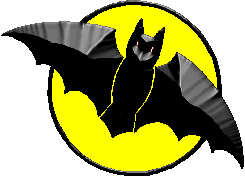






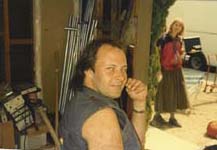
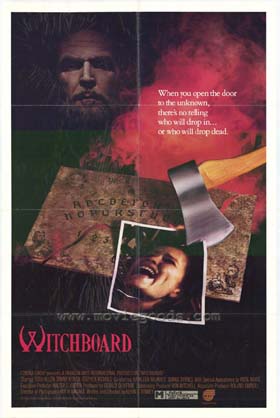
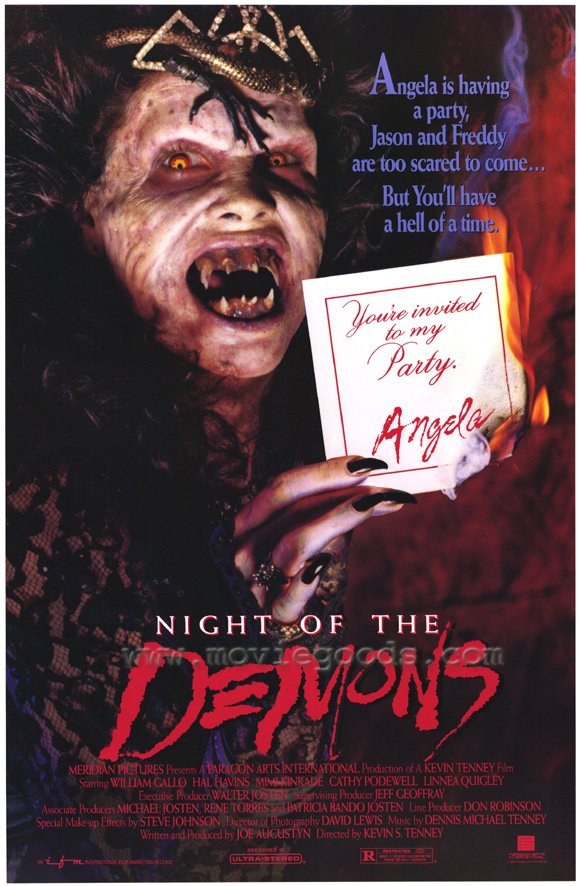
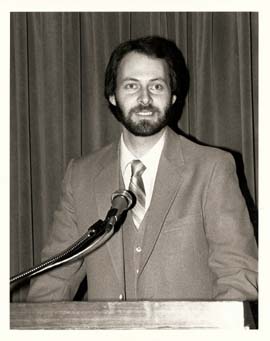 People weren’t as
aware of the business as they are now. There were
no film festivals, and very few film schools back
then. It never occurred to me that I could do it
professionally. I just assumed it would be my
life-long hobby, something I’d continue to
do on the weekends with my friends while I
maintained a real job during the week. But there
was a telecommunications teacher at my local
community college, where I was taking some
classes. I’ll never forget his name, George
Cozyris. He saw a couple of my Super-8’s,
and he told me about U.S.C. and
U.C.L.A. film schools. I was
a construction worker after high school, and
although the pay was really good for a
twenty-year-old, I knew I didn’t want to do
it for the rest of my life. My grades in high
school had been so bad, there was no way any
university was ever going to accept me. So I
applied myself full time at Solano
Community College and double majored
in Drama and Telecommunications. After two years,
my grades were good enough to get me into U.S.C.,
and Mr. Cozyris wrote me a glowing Letter Of
Recommendation. I got turned down by the Film
Department three times, but I kept applying and
pestering the faculty and department heads until
I finally got in. Then I made an undergraduate
film, WAR GAMES, which won
an Emmy Award, and
my graduate film, THE BOOK
OF JOE, was screened for the Hollywood
community to rave reviews. I ended up getting an
agent at ICM, my own office
on the Columbia lot, and a
three-picture deal with producer/director, Ivan
Reitman (GHOSTBUSTERS, STRIPES) all while I was
still a student at U.S.C.
People weren’t as
aware of the business as they are now. There were
no film festivals, and very few film schools back
then. It never occurred to me that I could do it
professionally. I just assumed it would be my
life-long hobby, something I’d continue to
do on the weekends with my friends while I
maintained a real job during the week. But there
was a telecommunications teacher at my local
community college, where I was taking some
classes. I’ll never forget his name, George
Cozyris. He saw a couple of my Super-8’s,
and he told me about U.S.C. and
U.C.L.A. film schools. I was
a construction worker after high school, and
although the pay was really good for a
twenty-year-old, I knew I didn’t want to do
it for the rest of my life. My grades in high
school had been so bad, there was no way any
university was ever going to accept me. So I
applied myself full time at Solano
Community College and double majored
in Drama and Telecommunications. After two years,
my grades were good enough to get me into U.S.C.,
and Mr. Cozyris wrote me a glowing Letter Of
Recommendation. I got turned down by the Film
Department three times, but I kept applying and
pestering the faculty and department heads until
I finally got in. Then I made an undergraduate
film, WAR GAMES, which won
an Emmy Award, and
my graduate film, THE BOOK
OF JOE, was screened for the Hollywood
community to rave reviews. I ended up getting an
agent at ICM, my own office
on the Columbia lot, and a
three-picture deal with producer/director, Ivan
Reitman (GHOSTBUSTERS, STRIPES) all while I was
still a student at U.S.C.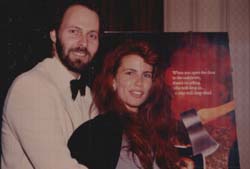 Oh,
yeah. My first choice for the lead roll of Linda
was actually the actress from VALLEY
GIRL, Deborah Foreman. Her audition
was incredible. But her agent wouldn’t let
her accept second-billing, and we’d already
hired Todd Allen to play Jim, giving him
top-billing. He was willing to share it with her,
but that wasn’t good enough. I understood
why; she was already established, and Todd was a
no-name. It would’ve been a step backward
for her. So we hired my second choice instead,
Tawny Kitaen (BACHELOR PARTY,
White Snake Videos), who I
believe ultimately served the film better than
Deborah would have. Sometimes you just get lucky.
Oh,
yeah. My first choice for the lead roll of Linda
was actually the actress from VALLEY
GIRL, Deborah Foreman. Her audition
was incredible. But her agent wouldn’t let
her accept second-billing, and we’d already
hired Todd Allen to play Jim, giving him
top-billing. He was willing to share it with her,
but that wasn’t good enough. I understood
why; she was already established, and Todd was a
no-name. It would’ve been a step backward
for her. So we hired my second choice instead,
Tawny Kitaen (BACHELOR PARTY,
White Snake Videos), who I
believe ultimately served the film better than
Deborah would have. Sometimes you just get lucky.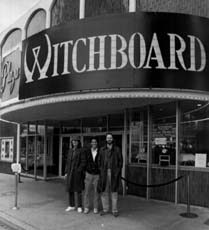 Actually, it got a very
wide release. It opened in March of 1987 on more
than a thousand screens across the country. It
was the fifth highest grossing film that weekend,
even though it came out against big studio films
like LETHAL WEAPON and TIN
MEN. It also kicked the hell
financially out of EVIL DEAD 2,
which opened the very same weekend.
Actually, it got a very
wide release. It opened in March of 1987 on more
than a thousand screens across the country. It
was the fifth highest grossing film that weekend,
even though it came out against big studio films
like LETHAL WEAPON and TIN
MEN. It also kicked the hell
financially out of EVIL DEAD 2,
which opened the very same weekend.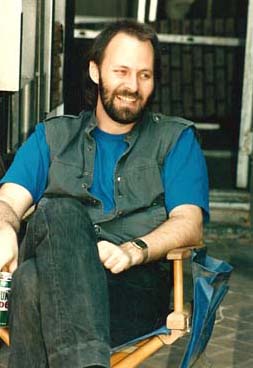 It
was being produced by the same company that had
made WITCHBOARD. The
writer/producer, Joe Agustyn, had a friend who
was supposed to direct the film, but he left at
the last minute to direct another film instead. I
was in negotiations with Smart Egg
Productions to direct a film entitled CAMERON’S
CLOSET when Walter Josten called and
asked me to direct NIGHT OF THE DEMONS.
I was so broke at the time, I was getting ready
to sell my car in order to pay my rent, and
suddenly I had two job offers at the same time.
It’s always feast or famine in this
business. Anyway, I chose to work with Walter
again, and the rest is history, as they say.
It
was being produced by the same company that had
made WITCHBOARD. The
writer/producer, Joe Agustyn, had a friend who
was supposed to direct the film, but he left at
the last minute to direct another film instead. I
was in negotiations with Smart Egg
Productions to direct a film entitled CAMERON’S
CLOSET when Walter Josten called and
asked me to direct NIGHT OF THE DEMONS.
I was so broke at the time, I was getting ready
to sell my car in order to pay my rent, and
suddenly I had two job offers at the same time.
It’s always feast or famine in this
business. Anyway, I chose to work with Walter
again, and the rest is history, as they say.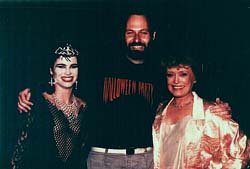 What did you get Mimi
Kinkade to do to audition for your film, that you
instantly wanted her to play Angela?
What did you get Mimi
Kinkade to do to audition for your film, that you
instantly wanted her to play Angela? 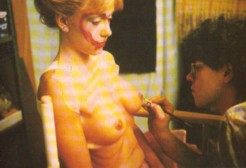 You
also hired Steve Johnson who did effects for
films like A NIGHTMARE ON ELM STREET
4: DREAM WARRIORS and FRIGHT
NIGHT as this film seemed almost
like a tribute to those two. This must have been
really exciting for you to have him on board as
he did a good job?
You
also hired Steve Johnson who did effects for
films like A NIGHTMARE ON ELM STREET
4: DREAM WARRIORS and FRIGHT
NIGHT as this film seemed almost
like a tribute to those two. This must have been
really exciting for you to have him on board as
he did a good job? 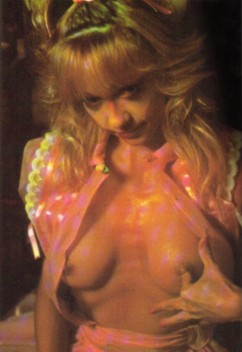 How did you get her to put
the lipstick in the nipple of her breast, as I
always wondered how that works with the
prosthetics by Steve?
How did you get her to put
the lipstick in the nipple of her breast, as I
always wondered how that works with the
prosthetics by Steve?  I loved
Mimi's dancing. How did you get her to do such a
great job?
I loved
Mimi's dancing. How did you get her to do such a
great job? 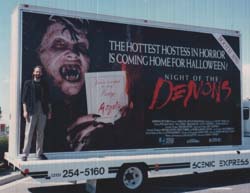 Did you ever see the
premiere of the film during it's theatrical run?
Did you ever see the
premiere of the film during it's theatrical run?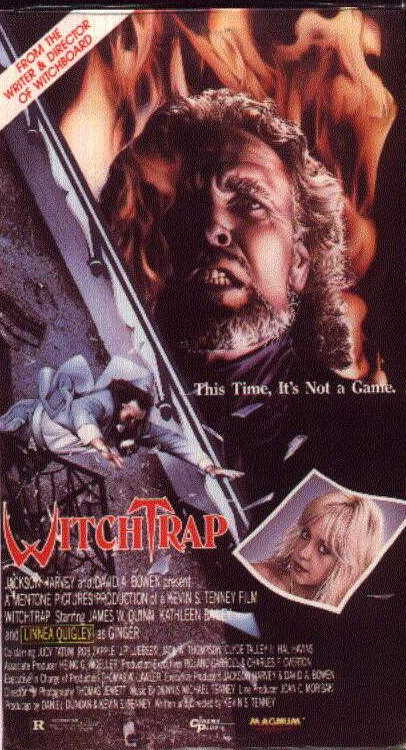 You
hired Linnea and Hal for your next project,
WITCHTRAP. It's
been a while since I've seen it, but was it a
semi-sequel to WITCHBOARD?
You
hired Linnea and Hal for your next project,
WITCHTRAP. It's
been a while since I've seen it, but was it a
semi-sequel to WITCHBOARD?
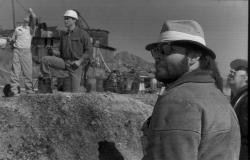 I was hired to take
over THE CELLAR after the
first director was fired. He’d already shot
eight days of a twenty-five day shoot, and the
production was three days behind. The script had
problems I couldn’t solve, because the
producers didn’t want to shut down
production while I was brought up to speed.
Subsequently, I shot the rest of the film with no
prep-time, having no choice but to use footage
the first director had already shot, footage that
was extremely problematic. Then after I left, the
producers shot some wrap-around footage with
silly narration, and turned a film that was
already troubled into a complete mess. But my
daughter saw it on the Sc-Fi Network when
she was twelve and thought it was really scary.
Plus, it actually got a few good reviews in
various magazines, so what do I know? Like I
said, you just give it your all and hope for the
best. I’m happy to hear you
liked it though.
I was hired to take
over THE CELLAR after the
first director was fired. He’d already shot
eight days of a twenty-five day shoot, and the
production was three days behind. The script had
problems I couldn’t solve, because the
producers didn’t want to shut down
production while I was brought up to speed.
Subsequently, I shot the rest of the film with no
prep-time, having no choice but to use footage
the first director had already shot, footage that
was extremely problematic. Then after I left, the
producers shot some wrap-around footage with
silly narration, and turned a film that was
already troubled into a complete mess. But my
daughter saw it on the Sc-Fi Network when
she was twelve and thought it was really scary.
Plus, it actually got a few good reviews in
various magazines, so what do I know? Like I
said, you just give it your all and hope for the
best. I’m happy to hear you
liked it though.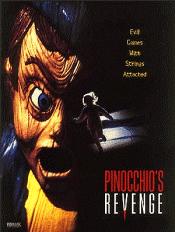 A movie
I'd like to know about is PINOCCHIO’S
REVENGE. What was this one about?
A movie
I'd like to know about is PINOCCHIO’S
REVENGE. What was this one about? 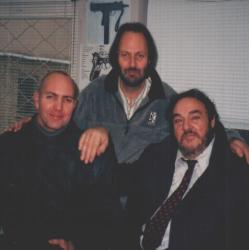 What was ENDANGERED
SPECIES like for you to do?
What was ENDANGERED
SPECIES like for you to do? 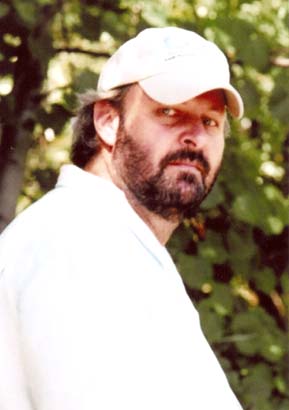 I
would show up on the set only to discover that
equipment I needed for that day’s shooting
had been cancelled, due to cost. The producers
knew I would fight them if they told me
beforehand, so they wouldn’t tell me until I
was on the set and had no choice but to make due
with what I had. Because of the unrealistic
shooting schedule, I was forced to cut important
plot points and character developments from the
screenplay. Also, they would tell the second unit
director not to shoot what I asked for, but to
shoot only what they felt was necessary. Then
during post, I would be unable to cut scenes
together, because I didn’t have the shots
I’d asked for. It was not a pleasant
experience. On the other hand, I had a great time
working with and hanging out with Eric, John, and
Arnold, as well as Jim Quinn, my old friend from
high school, who’d dubbed the demon voices
for NIGHT OF THE DEMONS. I
managed to cast him in a major role, so we got to
explore Vilnius, Lithu ania together on our days
off, which is where ENDANGERED SPECIES
was shot.
I
would show up on the set only to discover that
equipment I needed for that day’s shooting
had been cancelled, due to cost. The producers
knew I would fight them if they told me
beforehand, so they wouldn’t tell me until I
was on the set and had no choice but to make due
with what I had. Because of the unrealistic
shooting schedule, I was forced to cut important
plot points and character developments from the
screenplay. Also, they would tell the second unit
director not to shoot what I asked for, but to
shoot only what they felt was necessary. Then
during post, I would be unable to cut scenes
together, because I didn’t have the shots
I’d asked for. It was not a pleasant
experience. On the other hand, I had a great time
working with and hanging out with Eric, John, and
Arnold, as well as Jim Quinn, my old friend from
high school, who’d dubbed the demon voices
for NIGHT OF THE DEMONS. I
managed to cast him in a major role, so we got to
explore Vilnius, Lithu ania together on our days
off, which is where ENDANGERED SPECIES
was shot.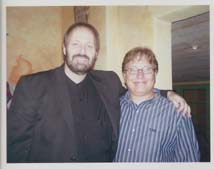 I
don’t think either of those magazines has
reviewed it yet, but I Can Smell Your
Brains On-line Magazine says it's
"...A rip roaring good time, not to be
missed," and Rogue Cinema says
it's "...A treat for horror film fans to
watch," while Dead Pit Radio calls
it "...My new favorite movie; horror fans
will wondercum all over it." Our most recent
review, from ScreamTV, says,
“BRAIN DEAD is a blast!
It’s been a long time since I’ve had
[this] much fun with a film.”
I
don’t think either of those magazines has
reviewed it yet, but I Can Smell Your
Brains On-line Magazine says it's
"...A rip roaring good time, not to be
missed," and Rogue Cinema says
it's "...A treat for horror film fans to
watch," while Dead Pit Radio calls
it "...My new favorite movie; horror fans
will wondercum all over it." Our most recent
review, from ScreamTV, says,
“BRAIN DEAD is a blast!
It’s been a long time since I’ve had
[this] much fun with a film.”